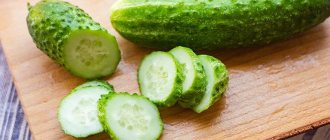Today, most of us strongly associate celery with lush green stalks, proper nutrition and diet. But this is only a small fraction of what can be said about this useful and amazing plant. The benefits of celery for the human body are enormous; it is beneficial for both men and women. Indeed, how many plants can you name whose roots, stems, leaves, and even seeds can be eaten? Celery is just such a plant. Let's try to understand the benefits of celery
, and is he really capable of performing miracles of healing?
The most popular varieties of celery are stalked. These are the same juicy dense stems that are most often associated with the name “celery”. Depending on how they were grown, the stems will be white or green. Green stems have a brighter taste, white stems have a milder taste.
Whatever you prefer - tops, roots or stems, your body will thank you in any case, because every centimeter is useful in this plant. The root, stems and leaves - everything contains amino acids and beneficial microelements: boron, calcium, chlorine and others. Let's look at this in more detail.
Composition and calorie content
Calories 13 Kcal
- Fat:
0.4 g - Proteins:
1.5 g - Carbohydrates:
3.9 g - Water:
89.6 g - Ash:
1.3 g - Fiber:
3.3 g
| Vitamins (per 100 g): | Quantity | %RDN |
| Beta carotene | 4.5 mg | 90,0% |
| Vitamin C (ascorbic acid) | 38 mg | 54,3% |
| Vitamin K | 29.3 mcg | 24,4% |
| Vitamin B2 (riboflavin) | 0.25-0.42 mg | 16,8% |
| Vitamin B9 (folic acid) | 36 mcg | 9,0% |
| Minerals (per 100 g): | Quantity | %RDN |
| Rubidium | 153 mcg | 153% |
| Bor | 72.2 mcg | 103% |
| Vanadium | 24.2 mcg | 60,5% |
| Iron | 1.3-6.3 mg | 25,3% |
| Potassium | 430 mg | 17,2% |
| Sodium | 200 mg | 15,4% |
| Magnesium | 50 mg | 12,5% |
| Copper | 103 mcg | 10,3% |
| Manganese | 200 mcg | 10,0% |
| Calcium | 72 mg | 6,5% |
View the full chemical composition of celery leaves ➤
View the full chemical composition of celery root ➤
Other important connections:
- Phytosterols
— 6.0 mg (10.9% of RDA)
- Purines
— 30.0 mg (23.3% of the RDA)
- Oxalic acid
— 61.2 mg (15.3% of the RDA)
It's important to note that cooking celery can result in some loss of vitamins - for example, boiling it will reduce its vitamin C content by 50%. Steaming can prevent the loss of some vitamins.
Recipes for aromatic dishes
Celery baked in sour cream is very tasty
. The root needs to be peeled, cut into pieces in the form of “noodles” and boiled until tender in salted water. Then the celery is removed and placed in a greased form. Top the vegetable with sour cream, to which you can add a teaspoon of flour for thickness. For a beautiful crust, everything is sprinkled with grated cheese. The dish is baked in the oven until cooked.
Very light dietary celery soup
suitable even for a romantic evening. Celery root should be grated on a coarse grater or very finely chopped and lightly stewed in vegetable oil. Then you need to add 1-2 tablespoons of flour to it, pour hot water over it all and boil until tender. Mix the yolk with a spoonful of sour cream, beat with finely chopped parsley and dill and, stirring, pour into the hot soup.
is even healthier .
The root should be chopped into thin strips and poured with salted boiling water. After 2-3 minutes, the water can be drained. While the celery is cooling, chop the onions, carrots, and apples. The salad should be salted to taste and seasoned with sour cream. It is appropriate to add a boiled egg.
Traditional healers believe that celery provides a great service to men. It is not for nothing that Pushkin is credited with the lines “To make a husband dearer to his wife, give him celery...”
Pear soup with cheese
Main ingredients:
- celery root – 700 g;
- pears - 2 fruits;
- butter – 50 g;
- garlic – 1 clove;
- onion – 1 head;
- cheese (mozzarella) – 150 g;
- spices to taste.
Cooking sequence:
- Add a portion of oil to a preheated frying pan, then add chopped onions, garlic and spices. This whole mass is fried well.
- Then diced pears and celery are laid out in a frying pan.
- After five minutes, add water so that the entire mixture of vegetables and pears is completely covered. Cook for 20 minutes over low heat.
- Then you need to remove the workpiece from the stove and let it cool, then beat it with a mixer. You should get a puree, to which you can add grated cheese.
- The puree soup is put back on the stove and brought to a boil.
- Before the end of cooking, you can also add spices to achieve the desired taste.
Roasted celery root
Fried celery root is ideal for meat and fish dishes. Cooking time 25 minutes.
Ingredients:
- root vegetable - 1 pc.;
- carrots – 1 pc.;
- leek – 1/3 part;
- dill and cilantro - a small bunch each;
- lemon – ½;
- oil - for frying;
- spices - to taste.
Cooking method:
- Vegetables are peeled and the pulp is cut into slices. To prevent it from darkening, sprinkle it with lemon juice.
- Pour oil into a heated frying pan and fry the celery until golden brown.
- Reduce the heat and, with the lid closed, simmer the vegetable until soft.
- Next, diced onions, carrots, herbs and spices are added to the root vegetable.
- With constant stirring, the vegetables are brought to readiness.
Celery soup
Ingredients:
- cabbage – 1 pc.;
- root vegetable – 200 g;
- onions – 6 pcs.;
- sweet pepper – 2 pcs.;
- tomatoes – 6 pcs.;
- green beans;
- tomato juice – 1.5 l;
- spices - to taste.
Cooking method:
- Vegetables are peeled, cut into small strips and poured with tomato juice so that it covers all the products. If this does not happen, add boiled water to the pan.
- Place the pan on the stove and bring to a boil.
- As soon as the soup boils, cover it with a lid and remove from the stove.
- After 10 minutes, after infusion, the dish is ready to eat. Herbs and spices are added to it to taste.
Celery and pineapple salad - recipe with photos, very tasty
The appetizer will delight you with an unexpected combination of flavors. It can be served on the holiday table. Guests will not be disappointed!
For 2 hearty servings you will need:
- Celery stalks – 3 pieces.
- Fresh or canned pineapple (one can or half a whole medium-sized fruit). Use canned food only if fresh fruit is not available! The difference in taste is significant.
- Green apple – 1 pc. Choose a medium size that is not too soft.
- A quarter cup of pecans. If not, substitute walnuts or cashews. I like the last option, but today I bought nuts unsuccessfully. I had to make do with what I had
- Low-fat yogurt without additives. No mayonnaise! At 100polezno.ru we discuss only what is really useful!
Procedure:
- Cut off the petioles.
- Separate the top part with the leaves.
- Wash thoroughly in running water, dry with a napkin.
- If the celery is very young, then you don’t need to do anything. If the stems are covered with a tough film, carefully remove it. Use a short knife or vegetable peeler.
- Cut crosswise into small pieces about 0.5 cm thick.
- Add yogurt and diced pineapple.
- Add some salt.
- Stir.
- Top with nuts or sesame seeds.
By the way, you can cut the stems into 10-12 cm pieces and serve with sauce. I loved dipping them in hummus or peanut butter. Original, and most importantly – not troublesome.
Celery in batter
The delicate batter makes the celery soft and juicy.
Ingredients:
- celery root – 1 pc.;
- flour – 100 g;
- eggs – 2-4 pcs.;
- cream – 100 ml;
- pepper, salt - to taste;
- oil - for deep frying.
Cooking method:
- Celery is cut into medium-thick slices.
- Flour is mixed with cream, eggs and spices are added.
- If the batter turns out liquid, then add flour.
- Each circle is dipped in batter and deep-fried until golden brown.
The finished dish is sprinkled with herbs.
Useful properties of celery
As we said above, this food product has a great many beneficial properties. Not only does it have the power to slow down the natural aging process, but it boasts a large amount of vitamins, proteins, acids and minerals.
It is especially recommended for older people to use it, for the reason that celery improves water-salt metabolism. I would like to add that the root and stem of the plant contain essential oil, which stimulates the secretion of gastric juice. By the way, celery is recommended to be consumed in large quantities by patients [1].
All parts of celery are healthy and nutritious.
TOP 10 beneficial properties of celery:
- Improves digestion.
The plant improves appetite and, thanks to fiber, can help digestion, metabolism and bowel movements, and promotes the smooth functioning of the entire body. In turn, adequate amounts of fiber may protect against certain diseases, such as colon cancer [2].
Additionally, don't forget that fiber feeds the beneficial bacteria in your gut, which are extremely important for many aspects of health, such as protection against diabetes and obesity [3].
- With high blood pressure.
Thanks to the content of phthalides (also known as 3-n-butylphthalide), which promote vasodilation (relaxation of the smooth muscles of the walls of blood vessels, mainly the aorta), celery normalizes blood pressure. Particularly useful in this case are the seeds of this plant, which contain hexane, methanol and water-ethanol extracts.
According to Dr. Kenneth Schafer of the Cleveland Clinic's Department of Cardiovascular Medicine, "To reap the benefits, you should eat about four stalks of celery daily" (or you can make fresh [4].
- Antioxidants.
They fight free radicals and suppress inflammation in the body, protecting our cells from damage. In doing so, they can protect us from many diseases, such as heart disease, cancer and Alzheimer's disease.
Researchers have identified more than a dozen different types of antioxidants that are found in celery. These include phenolic acids such as caffeic acid and ferulic acid, as well as flavonoids such as quercetin. This makes celery useful for treating a wide range of conditions that are aggravated by inflammation: joint pain (such as from arthritis), gout, kidney and liver infections, skin conditions, irritable bowel syndrome, and urinary tract infections.
- Heart support.
Celery is rich in potassium and vitamin K, which are important for heart health. Thus, potassium can help regulate blood pressure, counteracting the negative effects of high salt intake [5].
A meta-analysis of 16 studies found that higher potassium intake was associated with a 13% reduced risk of stroke [6].
Vitamin K may reduce the risk of heart disease by preventing calcium from building up in blood vessels. This buildup can cause blood vessels to become stiff and narrow, which can lead to coronary heart disease [7].
- Helps reduce high cholesterol levels.
As mentioned above, celery contains a unique compound called 3-n-butylphthalide (BuPh), which has lipid-lowering effects.
In a study conducted by the Department of Pharmacology at the University of Singapore, when rats were fed a high-fat diet for 8 weeks, those given celery extract showed significantly lower levels of low-density lipoprotein (LDL-C) and triglycerides (TG) in the blood. compared to a control group of rats that did not receive celery extract [8].
- Strengthening bone tissue.
Celery is a rich source of phosphorus and vitamin K, both of which are important for bone health. As mentioned above, vitamin K promotes calcium absorption, which prevents bone loss.
A review of five studies found that people with the highest vitamin K intake had a 22% lower risk of fractures than people with the lowest intake [9].
Another review of 7 studies found that supplementing with 45 mcg of vitamin K daily reduced the risk of hip fracture by 77% [10].
Moreover, your body needs adequate levels of phosphorus to maintain strong bones. Research has shown that higher phosphorus intake is associated with improved bone health and a reduced risk of osteoporosis [11].
- Anti-cancer properties.
Celery is rich in vitamin K and has already been shown to have anti-cancer properties [12].
A large study of more than 24,000 people found that vitamin K is associated with a reduced risk of developing and dying from cancer [13].
Additionally, a review of 5 studies in people with cancer who had surgery found that vitamin K supplementation after surgery slightly improved overall survival at one year [14].
- Helps prevent stomach ulcers.
A 2010 study published in the Journal of Pharmaceutical Biology found that celery contains a special type of ethanol extract that is beneficial to the lining of the digestive tract. It significantly replenishes the depleted gastric mucosa, preventing the formation of ulcers [15].
- Protects the liver.
Researchers from Helwan University in Egypt tested rats by feeding them celery (along with chicory and barley), and as a result, the rats experienced a reduction in the amount of dangerous fat they accumulated in their liver. This suggests that a diet high in celery, as well as chicory and barley, may be beneficial for people with liver disease [16].
- Fights infections.
Celery seed has been used for centuries as an herbal remedy with antibacterial properties. A 2009 report published in the journal Pharmacy and Pharmacology shows that celery seeds contain specific antimicrobial components [17].
When the extract was taken from celery seeds and mixed with harmful bacterial compounds that cause infection in humans, celery extract was able to significantly cleanse and reduce bacterial growth. This suggests that celery can be used to naturally boost immunity and fight bacterial infections.
Delicious and healthy juice for the body
It contains all the riches of this plant: microelements, vitamins, minerals.
You can easily prepare this product at home, and all parts will do: roots, stems, petioles, green leaves.
You can use a juicer or grater to prepare it.
In the second case, grate the required amount of raw material and carefully squeeze it through gauze.
If you have a blender, create green smoothies from it by simply mixing it with water or fresh vegetables, fruits and berries.
Vitamin salad
This salad is made from the leaf part of celery. The dish is very popular among raw foodists and supporters of natural nutrition. Its exquisite taste reveals itself gradually, delivering real gastronomic pleasure.
The following products will be required:
- celery leaves - 3 medium bunches;
- brown rice - one bag;
- onion - half a head;
- garlic – 2 cloves;
- soy sauce, vegetable oil, balsamic - 2 liters each. Art.;
- sugar - a third of a teaspoon;
- Ground peppers (black and chili) - to taste.
How to cook:
- First you need to boil the rice directly in the bag and cool it.
- Place finely chopped onion and garlic under a press.
- Boil the celery leaves for a couple of minutes, then rinse with cold water. You should get a single lump, which then needs to be gutted and cut.
- Salt the green mass and add all other ingredients.
- Combine the leaves with rice and mix thoroughly.
Stewed celery stalks with vegetables
And this dish will be appreciated by people who fast. Stewed celery with vegetables can be served as a side dish or cold appetizer. The recipe is extremely simple, and the entire cooking process does not take much time.
List of required components:
- celery – 3-4 stalks;
- carrots - 2 pieces;
- onions – 2 pieces;
- tomatoes – 2 pieces;
- salt, pepper, other seasonings - to taste;
- vegetable oil.
Cooking sequence:
- Carrots can be chopped or grated on a Korean grater, and then fried in oil.
- Then to the carrots you need to add onions cut into half rings, and then tomatoes.
- When the tomatoes release their juice, you need to add the celery stalks cut into slices.
- The vegetable mass can now be salted and seasoned with spices.
- The dish should be stewed for a quarter of an hour, and then it can be served.
When should you be careful?
Celery root has not only beneficial properties, but also contraindications. Apiol in the composition is an abortifacient known since the time of Hippocrates. Pregnant women should exercise great caution by discussing the menu with their doctor. Nursing mothers should also not get carried away with culinary experiments.
The plant can harm patients with epilepsy, as well as those with high blood viscosity. Those suffering from varicose veins, thrombophlebitis or gout should refrain from actively eating the roots.
Celery stimulates the production of gastric juice, so be careful if you have high acidity. Like radishes, it often provokes the movement of stones.
In foreign sources I found information that raw pulp sometimes causes a severe allergic reaction, even anaphylactic shock. Heat treatment destroys most of the allergen, but it is better for those prone to allergies to remain vigilant.
If you have any doubts or problems, do not delay visiting your doctor.
Celery for weight loss: how to use?
Today, many women ask the question: “What should I eat to lose weight?” Celery is just that case. It is not a fat-burning product, but it is almost completely starch-free. Some 5-6% doesn’t count. The main volume is occupied by dietary fiber, and 100 grams of root contain 18 kilocalories.
Celery is a popular ingredient in low-calorie, low-carb diets. It is eaten by people who care about their health.
If the problem of excess weight is pressing for you, then include this valuable product in your menu more often. It goes well with carrots, apples, kohlrabi and tomatoes.
Add to your favorite dishes, reducing their calorie content. This will improve your metabolism and allow you to achieve the desired result faster.
I don’t recommend messing around with juice. Extracting it from a root crop is still a pleasure. In addition, there is an opinion that its healing properties are greatly exaggerated.
What are the benefits of celery for men?
Let’s say right away that this plant is indispensable for men, since it contains androsterone, the male hormone.
[18], enhancing the manifestation of secondary sexual characteristics and increasing potency. By the way, a very interesting fact: when androsterone is released through sweat, it has an exciting and attractive effect on women, that is, like a pheromone.
Most experts believe that celery is a natural analogue of the drug Viagra.
. Swedish author C.E. Hagdahl states that "celery has a direct effect on arousal." If any of you want to get a similar effect, then it is recommended to drink freshly squeezed juice of the root of a unique plant every day.
Another reason why men should eat celery is that it also increases the amount of fluid for ejaculation and enhances climax.
On the subject: How to increase testosterone levels in a man?
Men who are overweight can eat celery, as it not only removes toxins from the body, but also improves metabolism and has a diuretic effect. The plant is a low-calorie product; in addition, it contains fiber, which helps control hunger.
And in conclusion, I would like to say that the whole celery is useful, but the most valuable of all its parts is the root, which is added to medications for the treatment of kidneys and liver, and is also used to enhance sexual function.
The uniqueness and benefits of celery in facts:
- Two stalks of a medium-sized vegetable provide vitamins A and C for 20% of the daily value;
- The smell of the vegetable causes appetite;
- A protein animal product eaten with celery is absorbed faster and does not leave a feeling of heaviness due to the presence of enzymes;
- A large proportion of coarse fibers when entering the stomach dampens the feeling of hunger;
- Non-starch polysaccharides determine high anti-inflammatory properties;
- A large amount of phenolic antioxidants, which are not destroyed by 10-minute steam treatment, protect against microdamage at the molecular and cellular level,
- Androsterone (male pheromone) allows the plant to be used as a natural aphrodisiac;
- Celery is included in the recipe for almost every French dish.
What are the benefits of celery for women?
As for lovely ladies, I would like to immediately say that celery contains dietary fiber, so it can be safely used to combat extra pounds. You can eat it as much as your heart desires, since 100 grams of greens contain only 16 kilocalories. By the way, there is even a special diet that includes celery soup.
The effect of the plant is stunning, as it not only helps get rid of harmful substances that accumulate in the body, but also from swelling. In addition, celery helps women with painful menstruation and menopause.
All parts of celery contain a substance called apiol (a plant analogue of the female hormone estrogen), which stimulates the contraction of the endometrium (the inner layer of the uterus).
By the way, scientists have proven that thanks to antioxidants, those who regularly add this plant to their food look healthier than those who do not consume celery at all [19]. This can be seen in the hair, the condition of the skin and nails.
Celery is indispensable for women: it helps with hormonal imbalances, prevents pain, weakness and bad mood on menstrual days. If after 35 years you carry out a course of treatment four times a year with celery seeds, then you will not even notice menopause.
Recipe note: pour half a teaspoon of plant seeds into one glass of boiling water. Under no circumstances should the product be boiled, only left to infuse for nine hours. Take one tablespoon of infusion four times a day. The full course of treatment is twenty-seven days.
What else is celery good for?
Probably, each of you is very interested in the universal beneficial properties of celery. So, let’s not bore you and tell you everything in order:
- Celery heals pathologies of blood vessels and heart;
- Helps prevent infectious diseases;
- Strengthens the immune system;
- Excellent as a prophylactic against atherosclerosis;
- Calms the nervous system;
- Relieves diseases of the kidneys, genitourinary system and hypertension;
- Good for the digestive system;
- Helps prevent the development of putrefactive processes in the intestines;
- Reduces inflammation and pain in diseases such as gastritis and stomach ulcers (celery, as well as cabbage, contains anti-ulcer vitamin U);
- Helps facilitate the digestibility of proteins.
In addition, this plant has a negative calorie content, that is, the human body, when digesting celery, spends much more energy than it receives. That is why celery will become your faithful assistant in dietary nutrition.
Celery is also good for children, especially if it is added to food in the spring, because this is how hypovitaminosis can be prevented.
Celery for weight loss
Celery is very low in calories and can be a valuable food that will help you lose weight due to its huge list of active substances, vitamins and minerals, as well as its ability to regulate lipid (fat) metabolism.
One of the main benefits of celery is that it is rich in nutrients, antioxidants, electrolytes, vitamins and minerals - all with very few calories.
Celery oil
Celery essential oil is obtained from any part of the plant, but the most valuable oil is extracted from the seeds, which are steam distilled. The oil has a strong pleasant aroma. It is used as a good diuretic. It is used for kidney disease.
A massage is performed with celery essential oil, thanks to which a person suffering from urinary retention gets rid of this ailment. Massage also helps remove toxins from the body, so it is recommended for use in the treatment of arthritis, cellulite, rheumatism and gout.
The oil of this plant tones the nervous system, gives strength and improves a person’s emotional state. However, celery oil is not recommended for pregnant women, as it has too strong an effect on the body.
What internal contents can celery boast of?
Celery can boast of all its main beneficial qualities solely due to its internal or chemical composition. What does this plant consist of in more detail:
- Vitamins: A, B, C, E, K;
- Acids: ethaudioic, organic;
- Chemical elements: iron; calcium; magnesium; phosphorus;
- Other elements: sugars, salt, protein, essential oil;
Now let’s take a closer look at the specific benefits of this interesting vegetable.
Harm of celery
- During pregnancy.
Celery should not be consumed in large quantities during pregnancy, especially in the third trimester, as it can cause premature birth due to the fact that it contains a compound called apiol, which stimulates blood flow to the muscles of the uterus and causes its increased contractions. In addition, when the plant is digested, gases are formed in the intestines, which negatively affect the baby. Also, celery is not recommended for women who are breastfeeding due to the overly active essential oils.
- Stones in the kidneys.
If you have kidney stones, celery juice is contraindicated for you, as it can cause the stones to move, which will require surgery. You can eat celery fresh, since with fiber and other foods, the active substances will be slowly absorbed.
- Kidney failure.
Due to the presence of potassium and phosphorus, celery may be harmful if you have kidney failure, consult your doctor. It is also not recommended to combine it with diuretics.
- Poor blood clotting.
Celery is rich in vitamin K, which affects blood clotting. Therefore, people with bleeding disorders who are taking medications such as warfarin should avoid consuming it in excess.
- With increased stomach acidity.
Celery should be taken with caution by people who have high stomach acidity, as this plant stimulates the secretion of gastric juice.
- It is also contraindicated to consume celery dishes during periods of exacerbation of chronic diseases.
Celery juice
The first thing we will note is the diuretic properties of celery juice. As you know, extra pounds are not only an excess of fat in the body, but also water.
Celery juice has a delicate diuretic effect and removes all harmful substances from the body along with urine. It also improves tone and helps normalize the functioning of the endocrine glands. By the way, celery juice can be safely used for rheumatism and arthritis.
This juice will help balance weight and reduce cravings for sweet and fatty foods. In addition, it helps to get rid of excess weight, cellulite and swelling, as it has a cleansing and diuretic effect.
Freshly squeezed juice will help calm the nervous system and maintain body temperature balance during extreme heat.
Celery juice will help prevent constipation and reduce the risk of calcification in the body. It will improve digestion and cleanse the intestines of harmful accumulated substances.
The juice will also help those who have sand in their kidneys and will facilitate its painless elimination. But if you already have stones, then it is better to refuse such medicine!
I would like to add that celery juice has an antiseptic and antimicrobial effect and reduces pain. This is why it is widely used to treat cuts, wounds and burns. The juice of the plant is also used to relieve irritation and redness from the eyes. By the way, many people rub celery juice on their eyes to get a healthy and clear look.
Recipe for making celery juice:
- 2-4 stalks of celery (or 50-100 grams of root)
- 1/2 small beet
- 2 carrots
- 1/2 green apple
- Optionally, lemon
Drink the juice in small sips. Use 1-2 times a day 30-60 minutes before meals.
If you don't have a juicer, how to make juice?
If you don't have a juicer, grate all the ingredients, wrap everything in cheesecloth or any other linen cloth, and simply squeeze everything in your hands, twisting it. All the juice can be squeezed out of the vegetables quite easily.
For diabetes
Celery can rightfully be called one of the healthiest foods for people suffering from type 2 diabetes, because celery root contains insulin-like substances. The plant does not cause sudden spikes in blood sugar. Celery lowers glucose levels in the body and stimulates the adrenal glands.
Fresh celery has a very low glycemic index of only 15 units. Celery juice is especially useful for people suffering from type 2 diabetes.
Celery juice
Celery juice is ideal for those women who want to quickly and effortlessly lose a couple of extra pounds. It is also useful for those representatives of the fair sex who suffer from type 2 diabetes.
Celery juice helps remove excess fluid from the body, eliminate protruding blood vessels on the legs and normalize metabolism. The drink has a light and mild laxative effect, therefore it cleanses the body of waste, toxins and carcinogens.
Celery juice contains a rich mineral and vitamin complex, so it should be included in the diet of those women who want to slow down the natural aging process and preserve the beauty and youth of their skin for as long as possible.
For healing purposes, the drink is used for swelling, as it has a diuretic effect. Celery juice gently and painlessly removes sand from the kidneys. The product is also useful for stabilizing the work and eliminating excessive excitability of the nervous system.
How to eat celery?
Celery is eaten fresh, boiled and dried, and also as a decoction. This vegetable can be added to dishes made from meat, used in salads and served as a side dish.
But it is best to eat celery raw, because this is the only way it retains all its healing and unique properties. Celery soup is very healthy.
Video: the most delicious celery salad:
In this salad, cheese can be replaced with walnuts. If possible, you can add pineapple pieces. For those who don't use mayonnaise, pineapple juice will be the binding liquid.
Celery is used in cuisines of different countries. It is eaten not only fresh, but also dried and as a seasoning for meat and vegetables. By the way, the leaves, roots and stems of this plant are more tender and juicier than, for example, the well-known parsley, although they are considered close botanical relatives.
Italians say that celery saturates the body with energy and is good to eat in any form. But in England they believe that nothing can decorate a dish with such a piquant aroma as celery king. The vegetable is added to fatty game dishes, stews and pickles. Celery gives any dishes prepared from eggplants, beans, potatoes and cabbage an exquisite astringency of aroma, since all its parts contain volatile essential oils.
What kind of plant is this
This is a vegetable. In the first year it forms a root crop. And the next year a stem develops from it and seeds ripen. The plant has a specific smell - this is because it contains essential oil, which has a powerful antimicrobial effect, so its crushed raw leaves can be applied to purulent ulcers.
Traditional medicine recipes
Celery against salt deposits
Thanks to its high amount of antioxidants and quercetin, celery has an anti-inflammatory effect.
Recipe No. 1: grind 40 grams of root, fill it with one liter of cold water, leave for eight hours and strain when the allotted time is up. Take one tablespoon three times a day.
Recipe No. 2: pour one tablespoon of plant seeds into two glasses of boiled cold water for several hours and then strain through cheesecloth. Take three times a day, one tablespoon at a time.
Recipe No. 3: take freshly squeezed juice from celery roots, two teaspoons three times a day (gradually increasing the dosage, individually) thirty minutes before meals.
Recipes against rheumatism
Recipe No. 1: one tablespoon of fresh plant roots is poured into two glasses of boiling water, left for four hours in a closed container, then filtered. The infusion is taken three times a day, two tablespoons, thirty minutes before meals. This recipe can be used for conditions such as joint pain, gout and rheumatism.
Recipe No. 2: one tablespoon of fresh celery roots is poured into two glasses of cold water. Next, the roots are infused for 5 hours and consumed 0.5 cups 3-4 times a day before meals.
Recipe for insomnia
This remedy will help you sleep soundly and increase the continuation of sleep. Thirty-five grams of fragrant celery root is poured into one liter of chilled boiled water, infused for eight hours and filtered. The infusion is taken three times a day, one teaspoon.
Allergy recipes
Recipe No. 1: freshly squeezed fragrant celery juice is taken two teaspoons three times a day thirty minutes before meals.
Recipe No. 2: two tablespoons of crushed roots are poured into one glass of cold water and left for two hours. The finished product is filtered and consumed 0.3 cups before meals.
Recipe No. 3: take one tablespoon of chopped celery roots and pour boiling water (1.5 liters). Leave for four hours, then strain. The infusion is taken four times a day, one tablespoon half an hour before meals. For allergic urticaria, infusion and celery juice are used.
Recipe for treating frostbite
Add dried celery (200 grams) to one liter of water and cook. Next, cool it to a tolerable temperature, and keep the frostbitten limb in the broth until completely cooled. After this, lubricate the skin with goose fat (or baby cream). It is recommended to rub in the fat every evening for seven days.
Growing and care
Root and petiole celery have a long growth period, so the seedling method is suitable for growing them. Seed material quickly loses its viability and takes a long time to germinate. This means that pre-sowing treatment is indispensable.
The seeds are soaked in warm water for a day, then wrapped in gauze or thin cotton damp cloth and wait for the seedlings to sprout. In a warm environment they appear within a week. Next, the seeds are placed in the refrigerator for 14 days.
Early leaf celery is sown directly into the ground; late varieties have a growing season of 80-100 days, so they are grown through seedlings.
Basic rules for successful cultivation of celery:
- Celery root greens are not cut. Otherwise, not a rounded root crop will be formed, but a “washcloth” of roots.
- High hilling of the root variety is not practiced, so as not to provoke the growth of lateral roots.
- After the root crop appears above the surface, the soil is raked and the root shoots are cleaned to create a rounded shape.
- Celery plantings are watered as the soil dries, without overwatering. Excess moisture provokes the development of putrefactive processes in the root system.
- Root crops are harvested after the tops dry.
- For growing petiole celery, soil with neutral pH=6.8-7 or slightly acidic pH=5.6-6.0 is suitable.
- Stem celery seedlings are planted in areas on the south side of the garden.
- Plantings of petiole celery are regularly thinned. Side shoots are cut off.
- Two weeks before harvest, the stems are wrapped in paper for the purpose of bleaching. This celery has a delicate taste without bitterness.
- Plants are fertilized with potassium and nitrogen fertilizers.
- Sowing of leaf celery seeds is carried out after the soil has been warmed to +10°C.
Varieties
The best varieties of root celery: Albin, Globus, Delikates, Egor, Esaul, Zvindra, Kaskade, Gribovsky, Maxim, Non Plus Ultra, Snow Globe, Yudinka, Yablochny.
Popular varieties of leaf celery: Kartuli, Bodrost, Zakhar, Nezhny, Samurai.
Self-bleaching petiole varieties: Tango, Malachite, Zolotoy, Triumph, Pascal.
Petiole varieties that need bleaching: Male Valor, Crunch, Utah, Atlant.
Uses of celery
Celery has long been popular in folk medicine, and for good reason. It has many healing properties that can cure diseases of various origins. For example, celery can be used to treat chronic kidney disease, wounds, ulcers and rheumatism.
Fresh juice of the plant is a sedative, so it is used for insomnia and other ailments associated with the nervous system. Celery is used as a good vitamin supplement. This plant prevents the development of cancer. Celery is very useful for men who have problems in their sex life, and the plant will also help improve the functioning of the respiratory system, heart, liver and kidneys.
Celery decoction for gastritis and stomach ulcers.
To prepare it, you need to pour 20 grams of the plant root, pre-crushed, with two glasses of boiling water. Place the mixture on the fire for 5 minutes. After removing from heat, steep the broth for about 8 hours. Next, filter it and take 2 tablespoons three times a day before meals. Attention: in case of such diseases, celery should be taken with caution, as it increases the secretion of gastric juice.
Celery with sand in the kidneys.
Take celery seeds and boil them. To do this, pour a teaspoon of seeds, pour a glass of water and put on fire for 10 minutes. Add a little honey to the prepared broth. Take the product three times a day, 30–40 ml before meals.
Attention!
This recipe is not recommended for use in cases of already formed kidney stones, as the remedy may provoke their movement!
Celery as an aphrodisiac.
Take celery and squeeze the juice out of it. Mix 100 grams of prepared juice with 20–25 grams of apple juice. Men should take the prepared mixture before an expected love meeting.
Celery root infusion for allergies.
To prepare it, take 2 tablespoons of crushed plant root and fill them with 200 ml of water, then leave it to brew for 2 hours and take 70 ml three times a day 20 minutes before meals.
Celery medicine for salt deposition in the body.
To prepare it, take 500 grams of celery (leaves and roots). Greens must be passed through a meat grinder. Then add 1.5 lemons with zest to the greens and leave the mixture in a dark place for a week. After squeezing the infusion, add 150 grams of honey. The finished medicine is placed in the refrigerator. Take a tablespoon three times a day. The course of treatment is 30 days, after which there is a break of 14 days.
Celery lotions.
You need to take 100 ml of celery juice, the same amount of vinegar and 1 gram of salt, mix everything and apply gauze soaked in this solution to the sore spot. The lotion should be changed every hour.
Celery for purulent inflammation.
They take the leaves and stems of the plant and make a paste out of them, which is applied to the affected area. The wound should be lubricated with ointment, which is prepared from celery juice mixed with butter in equal proportions.
What happens if you eat celery every day?
Celery is recommended to be consumed daily. All of the above effects are achieved only with long-term daily consumption. Over time, the functioning of the digestive organs and genitourinary system will return to normal, and the metabolic process will stabilize. But provided that the rest of the foods in the diet are as healthy as possible, and junk food is excluded from it.
To enhance the effects of celery, you need to eat it regularly. But you cannot increase portions beyond the norm. This can lead to various health problems. Most often, excessive consumption of celery leads to diarrhea and disruption of water balance.
Consumption rate
The maximum daily norm is 200 g. It is enough to eat 150 g of vegetable in any form, regardless of what part of it is used. You can drink 100-200 g of juice per day. Or divide this portion into several cocktails, including extracts from other plants. The stems, leaves and roots are used to make purees or combined with other products to make all kinds of soups, salads, and stews.
Contraindications to the use of celery
If there is an exacerbation of a stomach or intestinal ulcer, large doses of celery preparations should not be used. Celery is contraindicated for pregnant women, as it stimulates uterine contractions; nursing mothers also should not overuse celery.
People with varicose veins or thrombophlebitis should also avoid celery, as it dilates the walls of blood vessels, which is dangerous for varicose veins.
Author of the article:
Sokolova Nina Vladimirovna |
Herbalist Education: Diploma in General Medicine and Therapy received from the University named after N.I. Pirogov (2005 and 2006). Advanced training at the Department of Herbal Medicine at the Moscow People's Friendship University (2008). Our authors










